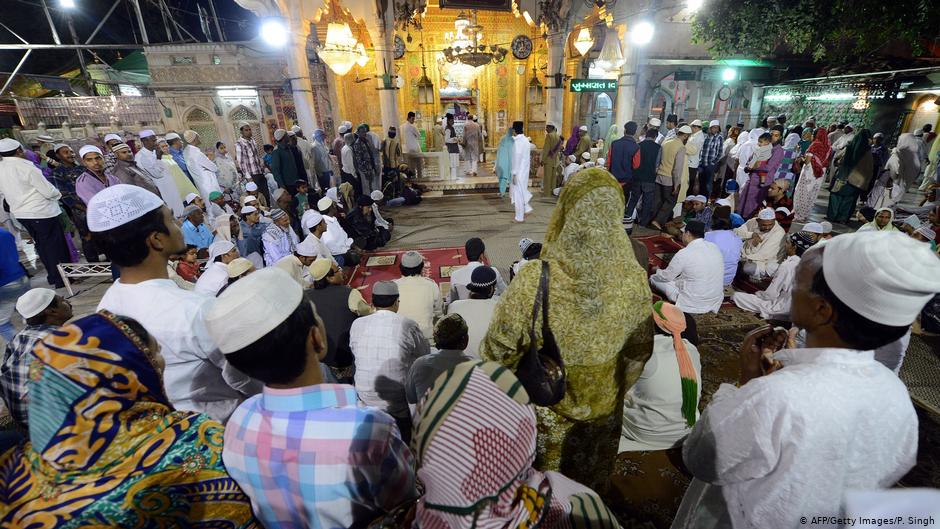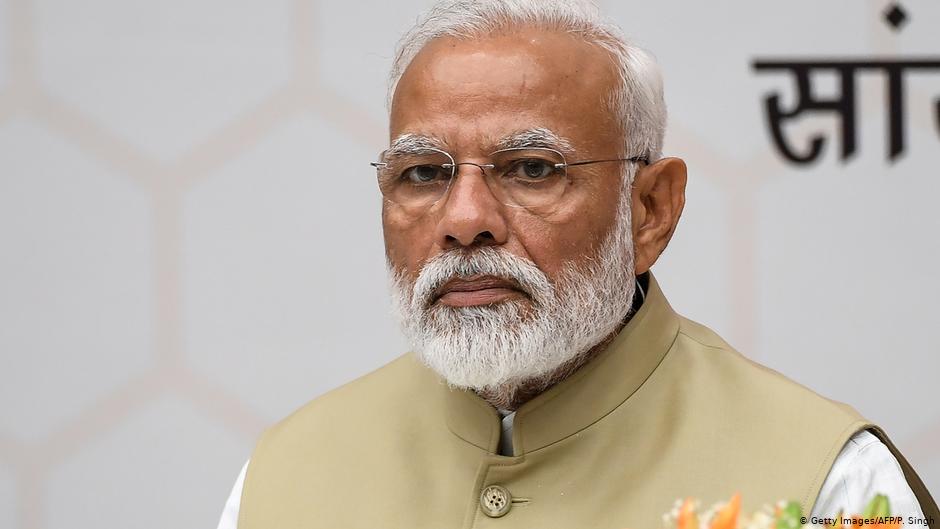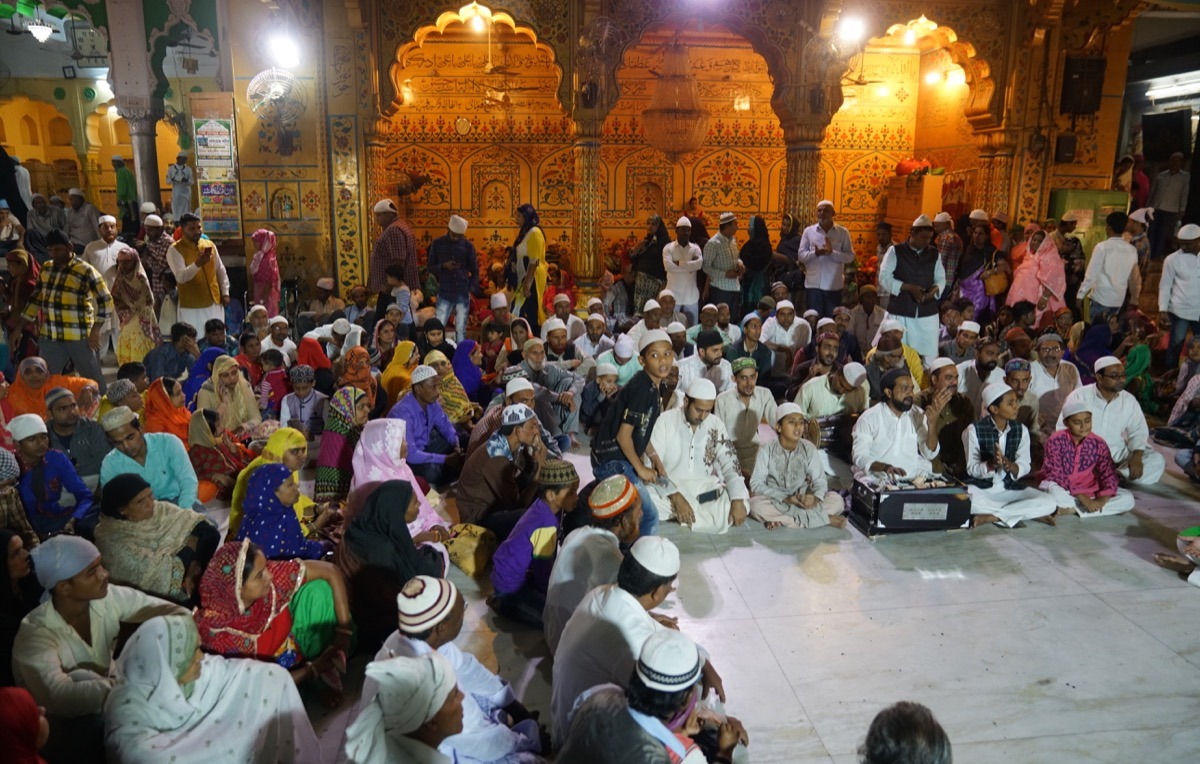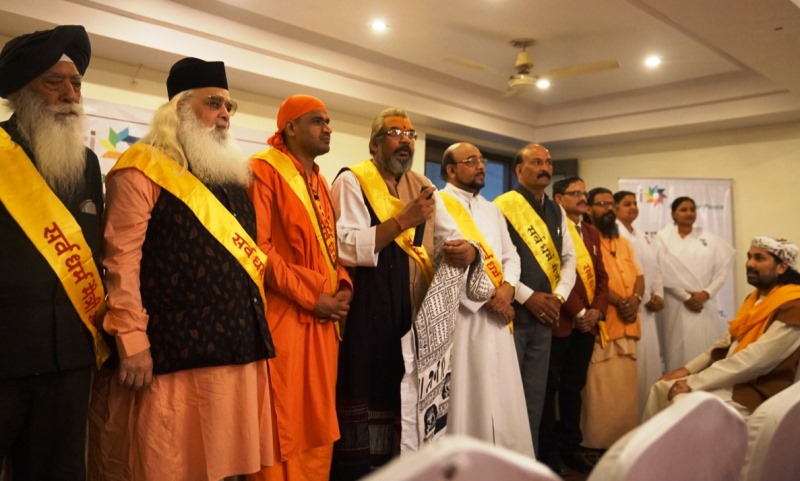"Not yet a Hindu Pakistan"

In the night train operated by Indian Railways, the traveller can already tell he's on the way to the Muslim pilgrimage town of Ajmer. The sleeping car is a colourful potpourri of people and sounds. Boisterous children, plump women in saris, businessmen and a group of itinerant Hindus.
In the midst of it all, on one of the blue upholstered bunks, sit two elderly gentlemen whose long white beards mark them unmistakably as Muslims. Suddenly, the two retrieve white prayer caps from their pockets and, without budging from the spot, assume a concentrated demeanour. They close their eyes, murmur a sura, bend forward and place their hands on their thighs.
The Muslim ritual prayer is carried out as they sit in a rocking train, somewhere between the Indian states of Gujarat and Rajasthan. For a moment, the two men facing Mecca seem to have escaped into their own world, far from the bustle all around them. None of the other passengers look up; no one finds anything remarkable about the improvised evening prayer.
The two pilgrims are on a ziyarat to visit the shrine of Moinuddin Chishti, India's most popular Sufi saint, who lived in the 13th century. Year after year, Ajmer attracts millions of pilgrims from all over the subcontinent, in particular Muslims from every region. Among the visitors are also Hindus, Sikhs and Christians who recognise and worship Chishti as a great holy figure of their common homeland.
Muslim population the highest anywhere in less than two generations
With 195 million Muslims, India has the world's second-highest Muslim population after Indonesia. And according to a report published this year by the Pew Research Center, by 2060, i.e., in less than two generations, India will be home to over 300 million Muslims, more than any other country on earth.

While the Muslims on the Indian subcontinent are by far the fastest-growing population group, they currently also seem to be the most vulnerable of India's minorities. When India's Prime Minister Narendra Modi of the BJP (Indian People's Party) took office in 2014, many of India's Muslims – who traditionally vote for the Congress Party – had an uneasy feeling. On the one hand, there was Modi's inglorious involvement in the anti-Muslim pogroms in Gujarat in 2002 and on the other, his membership in a party that has for decades promoted Hindu nationalist policies.
Modi tried to dispel the Muslims' concerns by promising them, after winning an absolute majority in the elections, to be a prime minister for all Indians. But what do things look like five years later, now that Modi has begun a second term in office?There is no doubt that during Modi's first legislative period there was a significant rise in anti-Muslim violence in India. The most disturbing sign of the prevailing mood are the forty or so lynchings of Muslims, primarily in connection with the alleged consumption of beef. These acts attest to a cultural climate sustained by a Hindu sense of superiority, one in which it has at least become easier to attack minorities. Many of the incidents went unpunished.
And then there is the systematic structural discrimination against Muslims that does not make the headlines, whether in education, the housing market or health care. This inequality has always existed, but it has been cemented further under BJP leadership. All of this has strengthened the impression among Muslims in many regions in recent years that they are no longer wanted in their country and at best only tolerated. Particularly in northern India, Muslims often no longer feel safe in their ancestral homelands.
After a strongly polarising election campaign focussing on the issue of security, with Pakistan as the arch-enemy, critics see Modi's party as being on a more or less open mission to slowly but surely expunge from the constitution the secularism that was once enshrined there by India's first statesman, Jawaharlal Nehru and to establish a Hindutva state.
A centuries-long spirit of fruitful co-existence
At the shrine in Ajmer little can be felt of such fears and oppression. Just like every evening, a large crowd of spectators gathers around the Qawwali musicians who clap as they ecstatically recite the hymns of the great Sufi poets against a night sky filled with the scent of incense. Men and women mingle in the audience. It's hard to tell how many non-Muslims have come here this evening. The shrine of Moinuddin Chishti is in fact one of the places in India that symbolise the centuries-long spirit of fruitful co-existence among the religions on the Indian subcontinent.

This spirit can be felt particularly keenly at the numerous Sufi shrines in India and Pakistan, highlighting the confluence of religious and spiritual traditions so typical of South Asia. Muslims often adopted Hindu customs and festivals after migrating to South Asia and a very special Indian brand of popular Islam developed. Moinuddin Chishti of Ajmer based his teaching on maxims advocating tolerance and peaceful co-existence, such as "Love for everyone, hatred for none".
Leaving the shrine complex through one of the back exits, the visitor soon loses himself in a labyrinth of narrow, congested alleys. Here there are traders hawking devotional items, soup chefs cooking meals for the pilgrims and cliques of beggars counting on the Muslim tourists' sense of duty to give to those less fortunate.
The Chishty Foundation has its headquarters in one of these alleys, founded by descendants of Moinuddin Chishti and dedicated to interfaith dialogue and promoting peace. In the basement of a non-descript apartment house, the foundation's chairman, Seyyed Salman Chishty, runs a library that also serves as a centre for dialogue and events.Maintaining an intercultural discourse on equal terms is one of the Chishty Foundation's missions. "Ajmer is a place of peace and hope for India and beyond," says Salman Chishty.
As if to prove it, he invites us to a seminar taking place the following day where the spiritual leaders of the 500,000 inhabitants of Ajmer will convene. Upon the invitation of the United Religions Initiative network, a Muslim sheikh, a Hindu priest, a turbaned Sikh leader, a monk dressed in orange and a local pastor take their place on the podium. After a round of prayers, they exchange views on the Indian spirit of co-existence. "The world can learn from us here in India", says the Sikh priest in conclusion, reaping applause.
One might think it's all just empty phrases paying lip service to sugar-coated sentiments, but the clergyman can certainly back his statements with a few centuries of Indian history: whether in the progressive Hindu-Muslim exchange of ideas under Mogul ruler Akbar, in the coming together of itinerant Sufi preachers and Brahmins in Kashmir, or in the peaceful development of Islam fostered by merchants on the Konkan Coast in south-west India. Popular legend has it that when Christian missionaries arrived in today's Kerala, they were soon driven to despair: the locals gratefully accepted the crucifix with Jesus and simply placed it among the other statues in the Hindu temple.

For centuries, India has been about inclusion rather than rejection, convergence rather than division. Of course, there has been no shortage either of episodes of conquest and bloodshed in the history of the subcontinent. And yet, despite all the negative developments of late, we can still hope that this singular Indian attitude will live on in many places, just as it has survived the storms and attacks of the past.
Although the social climate as a whole has become more fraught, the last five years have at least not witnessed any of the great uprisings or pogroms that have shaken India at irregular intervals. Relative to the enormous Indian population, these are ugly facts of history but should not lead us to draw any hasty or sweeping conclusions.
The responsibility of the mass media
Even if the signs are not pointing in a favourable direction and Western commentators like to write off India's pluralism, we must not forget that India is extremely diverse and resilient. Furthermore, only about a third of the Indian population actually voted for Modi. The fact that he was nevertheless able to achieve an absolute majority can be attributed to the fragmentation of the Indian party landscape.
One key to building peace lies in the social responsibility of the Indian mass media. They have been giving the impression for years that the country is struggling under a never-ending clash of cultures. The influence of such selective, divisive reporting and propaganda on the Indian people should not be underestimated. Comparatively little coverage is given in contrast to positive examples of harmonious co-existence, such as the joint celebration of religious festivals.
In the final analysis, a vigilant civil society must confront the prevailing narratives and defend pluralism based on a profound understanding of values. The renowned historian and political scientist Ramachandra Guha recently pointed out in an editorial for the Indian Telegraph that the Indian constitution's commitment to pluralism is still intact, despite all reasons for concern. But he also warned: "India is not yet a Hindu Pakistan; yet it is closer to being so than at any time since its founding."
Marian Brehmer
© Qantara.de 2019
Translated from the German by Jennifer Taylor